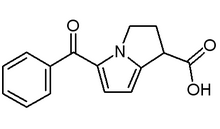DALLAS -- The administration of ketorolac during the first 24 hours after abdominal myomectomy may reduce the incidence of postoperative fever, Dr. Barbara I. Held said at the annual meeting of the Society of Gynecologic Surgeons.
The potential impact of decreasing the incidence of fever among women undergoing myomectomy can be seen by the observation that hospital stay averaged 2.9 days for patients without fever, compared with 3.95 days for those who experienced temperature elevations, based on a study conducted by Dr. Held and her associates.
The prospective, double-blind trial included a consecutive series of patients aged 18-55 years undergoing myomectomy at New York-Presbyterian Hospital, New York, between September 1999 and August 2001.
Patients were randomized to receive either the nonsteroidal anti-inflammatory agent ketorolac, 15 mg by intravenous push over 30 minutes every 6 hours for the first 24 hours after surgery, or a saline placebo according to the same regimen. All patients also received standard, patient-controlled morphine analgesia.
Initially, 122 patients were enrolled in the study, said Dr. Held of the hospital; 10 were withdrawn for reasons including hypersensitivity nausea, and nonadherence to the study protocol.
Of the 112 patients for whom data were available for analysis, a total of 38 (34%) experienced at least one episode of fever during the 24-hour postoperative period.
Among the 56 patients receiving the saline placebo, 23 (41%) spiked a fever above 101[degrees] F, compared with only 15 (27%) of the 56 women given ketorolac. This difference was statistically significant.
The reasons why myomectomy patients experience postoperative fever remain uncertain, although genetic factors are thought to play a role. Previous investigators have suggested that myomectomy fever may result when uterine tissue damage results in the release of arachidonic acid, which is converted via cyclooxygenase to prostaglandin.
In turn, the prostaglandins not only produce local inflammation and pain, but also stimulate leukocytes to release pyrogenic cytokines such as interleukin IB. These cytokines act centrally to produce fever.
"Our thought was that if we could block the local production of prostaglandins produced by tissue destruction in the uterus, we could prevent fever from developing," she said. "We chose ketorolac for a number of reasons."
The drug possesses both analgesic and strong anti-inflammatory activity, comparable to that of indomethacin and naprosyn, and it acts synergistically with morphine.
"Were we only masking infection? We don't believe so for a number of reasons," she said. The drug was administered only during the first 24 hours, which is generally too early for a postoperative infection to manifest itself. Also, more patients in the ketorolac group than in the placebo group had positive urine cultures, and the sole patient with a positive blood culture was in the ketorolac group.
But the evidence supporting the use of ketorolac for the prevention of myomectomy fever "is by no means conclusive," Dr. Held said. More work will need to be done to fully elucidate the pathogenic mechanisms involved, she said.
It has been estimated that approximately 25%-77% of women have fibroids or myomas (Lancer 357[9252]:293-98, 2001).
Treatment with anti-inflammatory agents such as ketorolac also could minimize the unnecessary administration of antibiotics, Dr. Held said.
COPYRIGHT 2002 International Medical News Group
COPYRIGHT 2002 Gale Group



